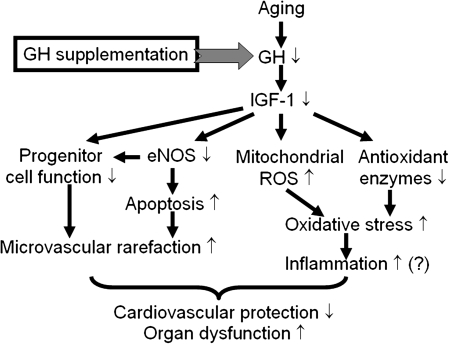Figure 2.
Proposed scheme for the mechanisms by which insulin-like growth factor-1 (IGF-1) confers antioxidative and anti-inflammatory vasoprotective effects in aging. During aging, increased mitochondria-derived reactive oxygen species (ROS) production enhances NF-κB activation, which promotes inflammatory cytokine and chemokine expression, microvascular endothelial activation, leukocyte adhesion, and extravasation. The ensuing inflammatory response contributes to the age-related decline of organ function (eg, heart failure and cognitive decline). The model predicts that IGF-1, via upregulating antioxidant enzymes and exerting mitochondrial protective effects, significantly attenuates mitochondrial oxidative stress in aging, resulting in inhibition of endothelial activation and vascular inflammation. IGF-1 also promotes progenitor cell function, improves NO bioavailability, and limits apoptotic cell death, which contributes to its microvascular protective effects. GH = growth hormone.

